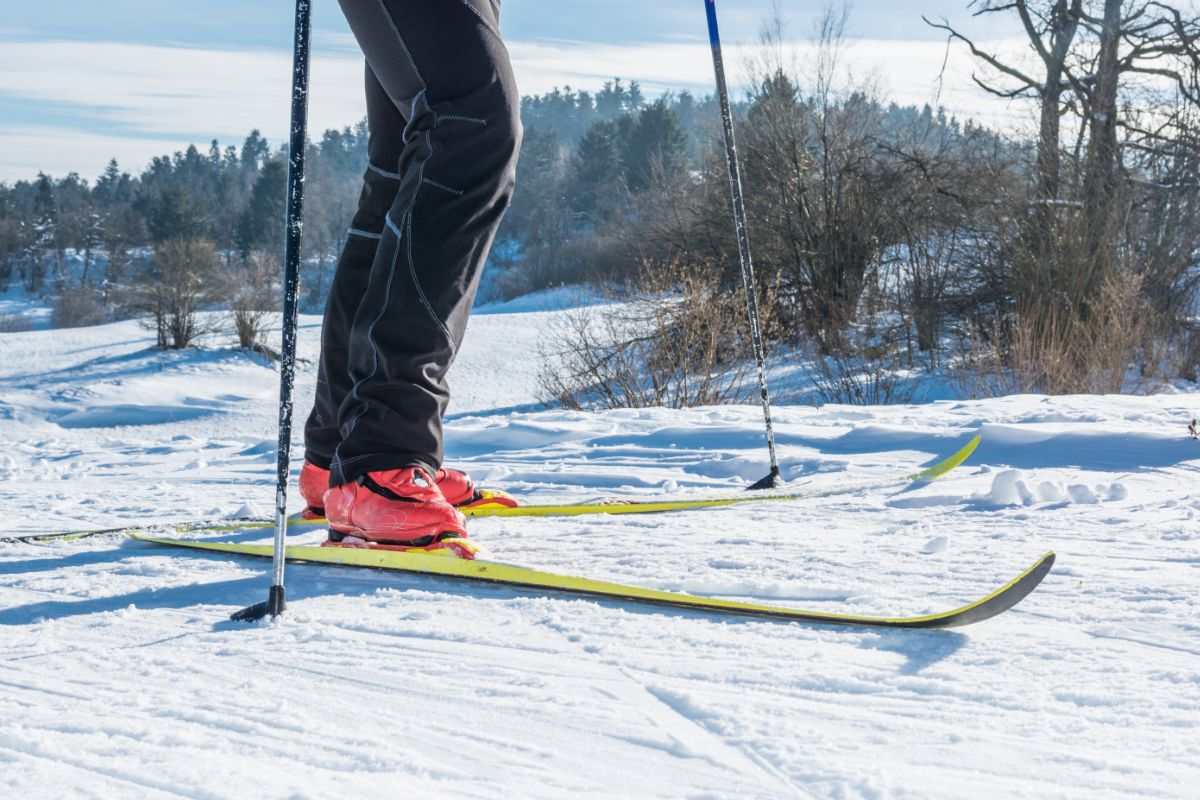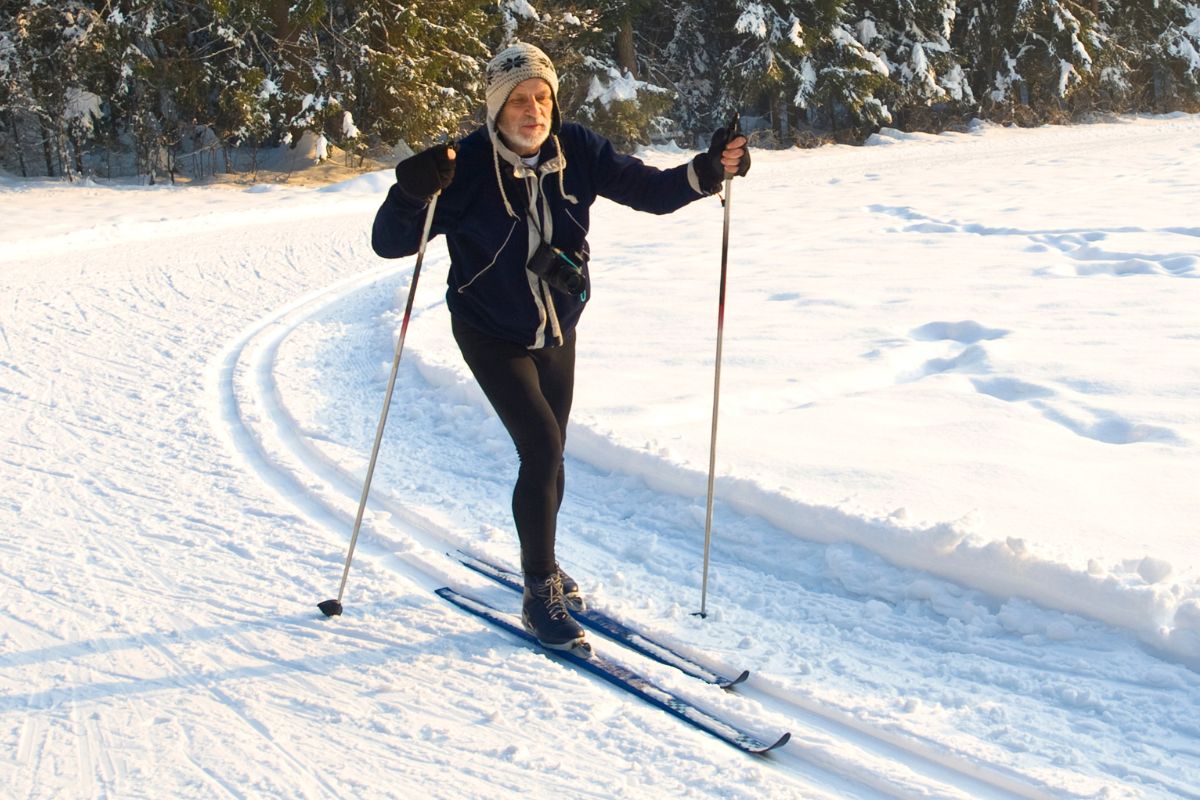Cross-country skiing is an extremely popular pursuit, but some of you might be scratching your heads wondering what exactly is the difference between this and regular skiing. Well, cross-country skiing is actually very technical.

One of these is because of the aspect of the skis themselves. There are two different zones in your skis, one being the glide zone and the other being the kick zone. The kick zone is divided into 3 zones itself, which we’ll take a look at later.
So how can you get the correct size of skis for your cross-country skiing?
Is there anything else you should be aware of when you are picking cross-country skis? Well, take a glance at our guide ad you’ll have everything you need to know about cross-country skiing.
How Can You Get The Right Sized Cross-Country Skis?
There is a very simple calculation that you can make for getting the right size skis for you. All you have to do is take your height and add an extra 15 or 20 cm (or 5 to 7 inches).
This is to make sure that your height is adequately balanced when you are walking along the slopes. You should also factor your weight into this equation. There are many types of ski manufacturers that offer you various different features and ski types.
In addition to this, you’ll need to assess what skill level you are at. If you consider yourself a beginner and you want to see some improvement quickly, then you should aim for longer skis.
However, if you are not confident with the classic cross-country ski style, then we would say stick with the shorter length.
You can get racing or professional skis that will allow you to move well across the slopes. However, we would only recommend that you pick up a pair of these skis if you are hitting the slopes on a regular basis.
You’ll also have to consider the camber and the flex of your ski.
The camber is how much the ski will arch in the center, whereas the flex refers to how flexible the ski is. You can usually feel this flexibility when you are pushing down the kick zone into the snow. We’ll talk more about camber and flex later in the article.
How Can You Get A Decent Kick Zone For Your Cross-Country Skis?
As we mentioned above, there are 2 different sections to your ski, one of them is called the glide zone and the other is called the kick zone.
The kick zone is usually found in the area immediately underneath your foot. The principle here is that you should be able to push your foot down on the kick zone and then glide forward. This is what’s known as the ‘diagonal stride’.
You can get 3 different styles of kick zone:
- Fishscale – these are mainly aimed at beginners and have a waxless design.
- Skin – these are more for intermediate skiers that will increase the proficiency of your skiing style.
- Waxable – this is for the advanced skier who wants to enter competitions.
If you are just setting out on your cross-country skiing adventure, then we would suggest that you go for the fish scale kick zone, as these have a much better grip.
However, if you want to have a decent glide and you are getting the hang of the traditional style of skiing, then we would suggest that you go for the skin kick zone. This will give you a good gliding distance while keeping you secured to the floor.
The final type of kick zone, the waxable kick zone, can give you a high degree of glide. You can apply as much or as little wax as you like to change the movement of your cross-country skiing.
The latter ski is best left to those who consider themselves professional skiers and want to enter competitions.
What Is The Camber And Flex Of A Cross-Country Ski?

If you have ever tried to flatten your skis right to the ground, then you might have noticed that only the tip and the tail touch it. This is because it arches in the middle. This type of arch is often called the camber.
The higher the camber, then the more advanced the ski is. However, things like the weight and height of the skier will also affect how the ski is shaped.
The flex of your ski will refer to how rigid it is. This is when you push down on the ski and how much it will bounce back. When you have taken your weight off the ski, the camber should flex back and give you a better glide.
The flex of the ski will only really matter if you are attempting certain moves when you are skiing. The more rigid your ski is, then the more you’ll be able to use the ski edge to perform certain moves.
If you are going to be skiing in the classic cross-country fashion, then it won’t matter how much your ski can twist and flex.
What Is The Ski Sidecut?
The width of your ski is usually known as the sidecut. This will determine how stable you can be on the slopes as well as how far you can glide.
If you are a beginner on the slopes, then you should have a ski that is much wider, as this will help you to balance. The narrow ski that you get, the better control you’ll be able to have.
How Much Will You Have To Pay For Cross-Country Skis?
This will all depend on what skill level you’ll want for your skis. If you are looking for something with a lot more material used, then you’ll probably have to be paying a lot more.
Conclusion
We hope that our guide to cross-country skis has helped you determine what is the best size for you and how much money you’ll be looking to spend. Remember that the length of your ski should be longer than your height by a few inches.
- Types of Skiing Terrains: A Comprehensive Guide for Every Skier - December 6, 2024
- Skiing Nutrition: Essential Nutritional Advice and Meal Planning for Skiers - August 15, 2024
- Backcountry Skiing Explained: Essential Tips and Gear - August 8, 2024








